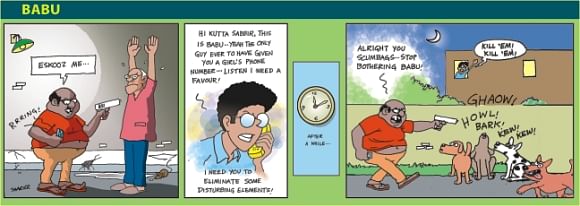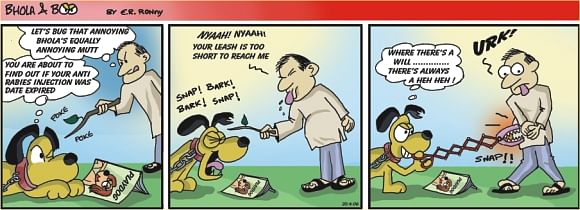


By, I.M. Tanjin Ahsan
XBoxpmp According to rumours in the US, Microsoft is developing another device to take on the DS Lite, the PSP and the iPod. And it isn't Origami.
The story, originally from The Mercury News in the US, claims the device is a portable multimedia and gaming system, which they hope will have the functionality and versatility to challenge all three of the big guns in the portable market.
Author of the story, Dean Takahashi, claims that the project's team is already in place, including Xbox system designer Greg Gibson. The machine, he says, is intended to hit the market in 2007.
Seiko bluetooth watch
Technology is a wonderful thing. Once we were happy for the humble watch to tell us the time, but now the gadget-obsessed consumer demands more. Enter Seiko with their bluetooth watch.
Seiko's prototype timepiece has just been unveiled in Japan. Designed for mobile phone owners (so effectively, all of us), the watch can connect to a mobile phone and display important information on your wrist, such as battery condition, if you have a new message and network signal strength. In addition, the subject and sender of the received sms can also be displayed if you install software from Seiko onto your mobile phone. When you receive a call or sms, the bluetooth watch can play a preset ringtone or even vibrate.
Not exactly life-changing, but a smart looking watch and a nice idea that we're sure to hear a lot more about in future.
Want the time? Ask a piece of wood
Plastic? Metal? That's all seems to be a bit old hat. These days, you need a clock made out of a bit of timber, like this catchily-named Wooden Clock.
It's not just the wood aspect that catches the eye - check out the glowing numerals, which seem to float on the surface of the wooden block. Indeed, until the numbers illuminate, the Wooden Clock looks exactly like a regular block of wood - albeit a stylish block of wood that would sit neatly on your equally wooden sideboard.
In fact, the only visible functionality is the buttons for setting the time and alarm on the back. Oh yes - and the plug. Costs about £100
Swiss army knife with MP3 player
You've got to take your hat off to the Switzerland - while the world spends millions on updating their armouries, they've never needed anything more than the trusty multi-purpose knife. Not anymore - the knife has been updated - it's now got an MP3 player!
Don't worry traditionalists, the Victorinox Swiss Army Knife still has a knife, nail file, and a pair of scissors. But it now features a 1GB detachable MP3 player with FM radio, digital voice recorder, remote control, earphones, a jogging armband and a rechargeable lithium battery.
Also priced about £100.
CES 2006: USB flash drive wristband
Imation Something a little more quirky from the CES - the Imation Flash Wristband, which allows you to carry personal data around in the style of one of those charity bands that were all the rage last year.
The Imation band is made of a rubber molding shell and has a "friction fit" locking band, which should protect you from losing precious files either by loss or by heavy blow.
Available as a 256MB drive and in a choice of blue and black, this wannabe fashion accessory cost about US $35.
Pix visual communicator
If talking or even texting seems a bit like hard work, you might be interested in Pix, a visual communicator you can programme to display moving pictures, images and text.
Communication with this strange circular object is through the 177 small LEDs. Any combination of text and images can be input to the communicator via software on a PC. Create and edit your own text and images, or you can share existing Pix code with other owners via the net.
If you're out and about, infrared communication between Pix owners means you can communicate in your own special way. In fact, you'll probably need someone else to have one or you'll probably just look a bit odd with your coloured disc!
From latex to Lisa Frank
I had my heart broken this week. This kid needed an eraser to use, and, not having any other around at home, I had to part with one of my favourite colourful Lisa Frank erasers. As I watched, in helpless terror, while that little cube of rainbow-coloured rubber disintegrate in his grubby little hands, I was filled with a strange sort of appreciation for Man's ingenuity. I mean, who would connect that lovely, scented, colourful bit of stationery to a puddle of gooey sap trickling down a rubber tree?
To trace the story of evolution of the eraser, I made my way to the rubber plantation at Pirgacha, Modhupur, in Tangail, and saw for myself the first few steps in the rubber-making process.
All is quiet inside the rubber plantation as we enter the area. With those beautiful, tall slim trunks reaching upwards into a canopy of green, it's easy to imagine yourself inside an enchanted forest. Yet, with no undergrowth, and a complete absence of insects, or birds or animals of any kind, the plantation is little more than a green desert.
We walk closer to the trees, and notice the slits on the bark, and the little collection bowls. An Internet search has told me that the species Hevea brasiliensis is commonly used for commercial rubber production, so I guess those must be the trees I'm seeing. These trees are grafted and cloned in a nursery very near the main plantation area. Anyway, the rubber comes from the latex, which is the milky white sap that the tree produces when the bark is cut. It trickles down into the collection cups. Every night, a new cut is made into the bark, to create a new flow of latex, because after a while, the milky stuff turns into a dried, non-fluid, stretchy substance called the 'tiless' in local jargon. The rubber workers have funny names for the different types of rubber sap. The main white sap that is collected in the cups is latex, as mentioned before. The sticky brownish cup-shaped residue that forms along the inner surface of the cups is called the 'kaplam', while any sap that trickles down into the ground is called 'mudlam'.
The latex that is freshly tapped from the tree is full of tiny rubber particles; around each particle is a thin layer of protein, which prevents the rubber from forming a lump. Breaking the protein layer allows the polymers to coagulate. The rubber producers mix water and sulphuric acid to the latex to form stretchy sheets. Anyone who's seen this part of the process knows that acidified rubber stinks like baby poop! This is then dried and then smoked at great temperatures inside a 'dhoom-gar', to create elastic sheets of rubber. This process is called 'vulcanisation'. Surprisingly, smoked rubber smells pretty good.
The smoked rubber is then carted off to the factories, where it is processed, coloured and rolled into different shapes to form everything from tyres to erasers. So the next time you use an eraser, you might just see it as more than a useful piece of stationery; it's got a wonderful story to tell!
By Sabrina F Ahmad
[email protected]
